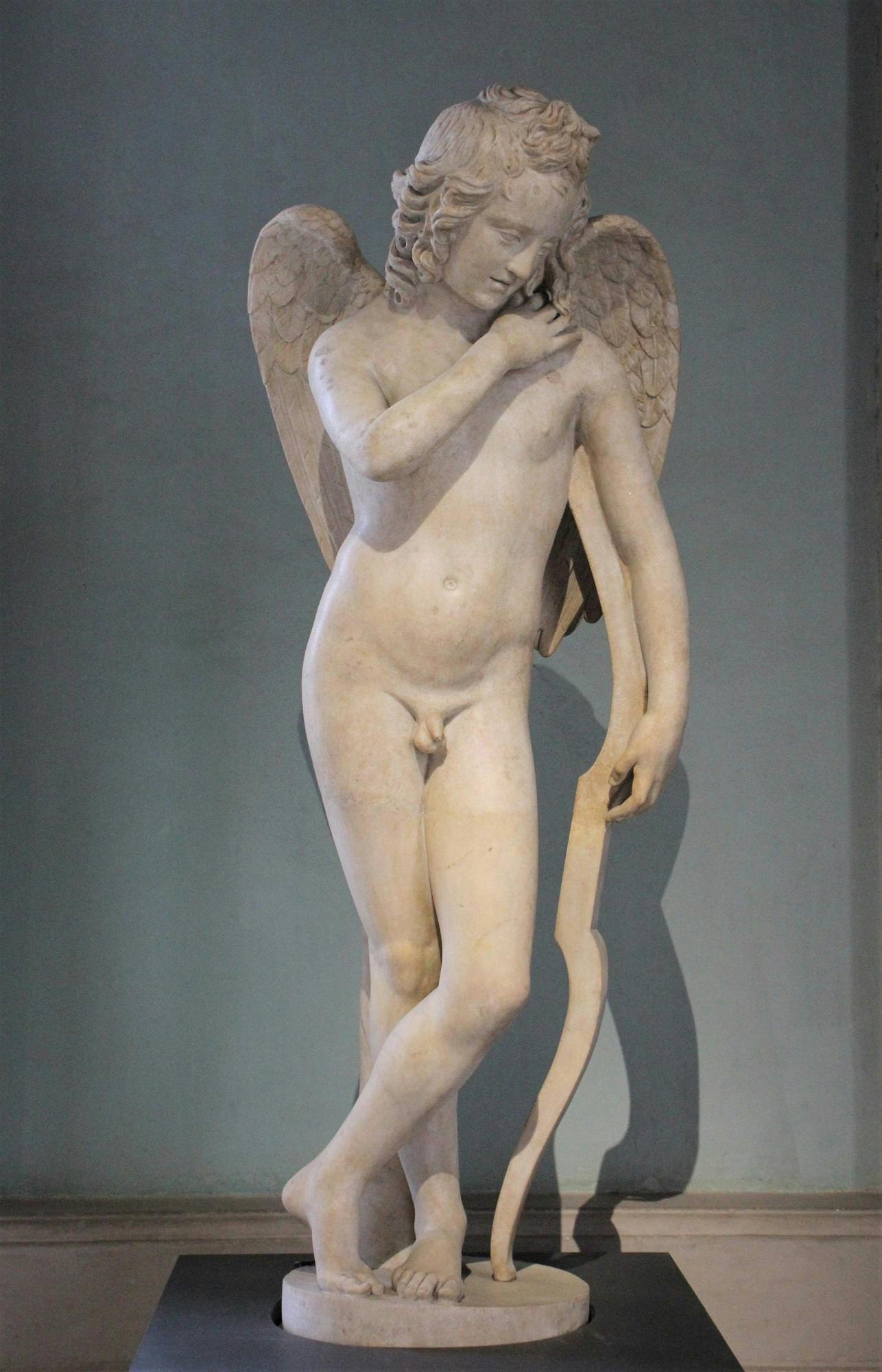Cupid with bow
Roman art
Like other statues of putti and cherubs displayed in the Tribune on different occasions, this work also comes from Pitti Palace, where its presence in the White Room was first documented in the early 17th century. It was moved to the Gallery in the 19th century, where it was placed in the Room of the Hermaphrodite and later, in the Second Corridor. Today, this marble statue is displayed in the majestic setting of the Tribune, along with other famous works. The original statue depicted a funerary genius resting against an upturned torch, but it was transformed into a Cupid with bow by restorer, Innocenzo Spinazzi (1726-1798). In Roman religion, funerary genii were considered a kind of guardian angel for individuals and families, and as such were to be found in both sculpted and painted form (such as the famous frescos in Pompeii). The frequent use, in ancient times, of depicting the genius as a young winged divinity encouraged Spinazzi to change the original subject into Cupid, an allegory for the god Eros. The workmanship of the hair, which features a limited use of the drill, dating the work back to the late period of Hadrian.
V. Saladino in Palazzo Pitti. La reggia rivelata, Catalogo della mostra (Firenze, Palazzo Pitti, 7 dicembre 2003-31 maggio 2004), a cura di G. Capecchi, D. Heikamp, A. Fara, V. Saladino,Firenze 2003, p. 514, n. 37 (in scheda).
